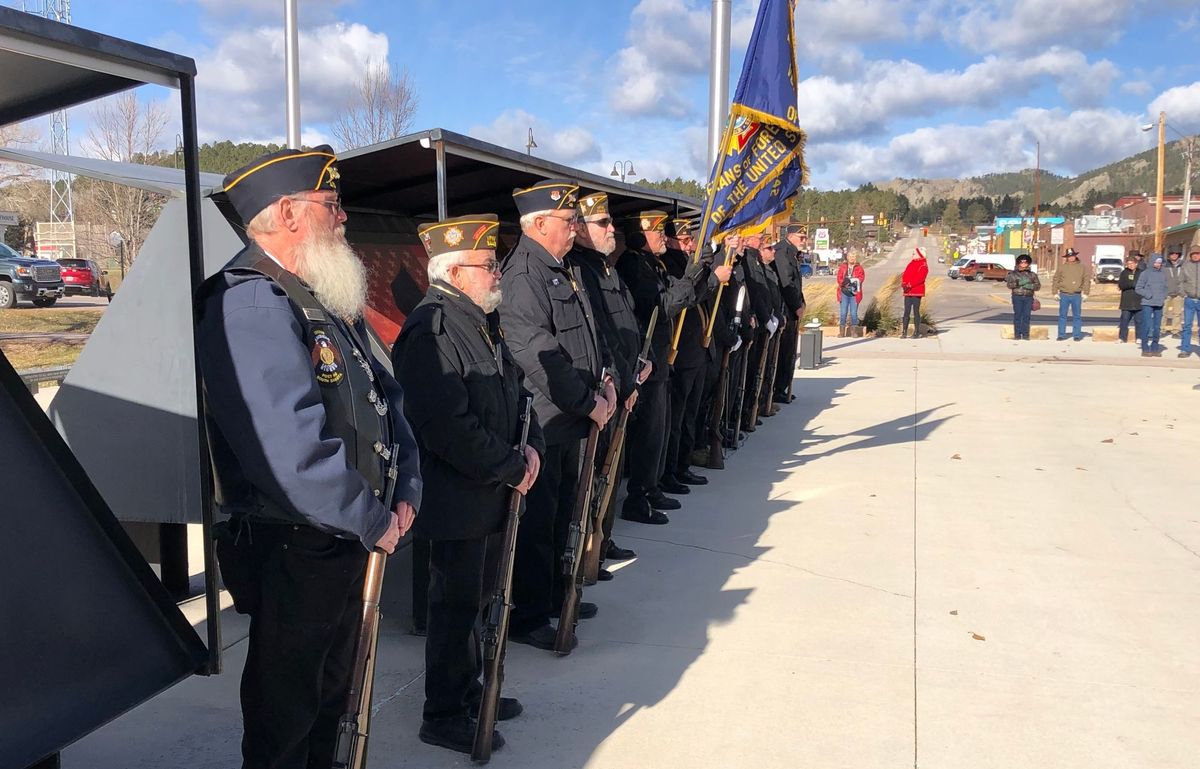
Stu Whitney/South Dakota News Watch
It was 2017 when Tony Gonsor, a 74-year-old Vietnam veteran and Custer, S.D., resident, took charge of the community’s veterans honor guard, presenting military honors at funerals and on holidays such as Memorial Day and Veterans Day.
He quickly realized that there was no shortage of funerals for veterans at Black Hills National Cemetery and other sites, but finding able-bodied veterans to fill out the honor guard was a challenge.
“The average age is around 70, and a lot of them are slowing down,” said Gonsor. “We’re always trying to find younger members.”
The problem is emblematic of a larger trend in South Dakota, where the number of military veterans has declined nearly 20% since 2010, from 69,780 to 56,590, according to the U.S. Census Bureau. Veterans comprise 8.3% of the state’s adult population, down from 11.4% in 2010 but still more than the national average of 6.2%.
South Dakota ranks 22nd among U.S. states in the number of veterans per 100,000 adult residents, ahead of neighboring states North Dakota (25th), Nebraska (30th), Iowa (35th) and Minnesota (41st).
176 WWII veterans in South Dakota
For Gonsor, honor guard duties were traditionally filled by those who served in World War II, Korea or Vietnam, proud members of the American Legion or Veterans of Foreign Wars who faced the inevitable drumbeat of time, accelerated in some cases by the COVID-19 pandemic.
Census data show that there are 176 World War II veterans (0.3%) alive in South Dakota, compared with the Korean War (2,056; 3.6%) and Vietnam (19,363; 34.2%). Those who served in the Gulf War before Sept. 11, 2001, (15,116; 26.7%) and after 9/11 (16,317; 28.8%) make up the majority in the state.
Connie Johnson, president of the South Dakota Veterans Council, pointed to research that veterans under age 65 are more likely than their older peers to seek mental health counseling, with services increasingly available through the U.S. Department of Veteran Affairs.
“A lot of older veterans were in organizations like the VFW and American Legion, and that’s where they went to find that camaraderie,” said Johnson. “In some ways, that served as mental health therapy for them. You see less of the (Gulf War veterans) in those groups because they can seek treatment and camaraderie through different levels of resources available.”
Military rites include 21-gun salute
Gonsor’s first step in reviving the Custer Veterans Honor Guard was combining the ranks of Custer Post 46 and VFW Post 3442. That increased the number of volunteers available to perform military ceremonies such as the playing of taps, flag presentations and the 21-gun salute.
Still, there were growing pains as the squad – ranging in age from 47 to 85 – accepted requests to appear at sites throughout the southern Black Hills, as many as three funerals a month in addition to special ceremonies.
“Six years ago, there weren’t two guys dressed the same,” Gonsor said of the squad. “Now everybody has a uniform and we’re all on the same page most of the time. A lot of the ceremonial weapons were showing their age for a while and would sometimes misfire. But now we’ve got a good set of rifles, the same type used in World War II.”
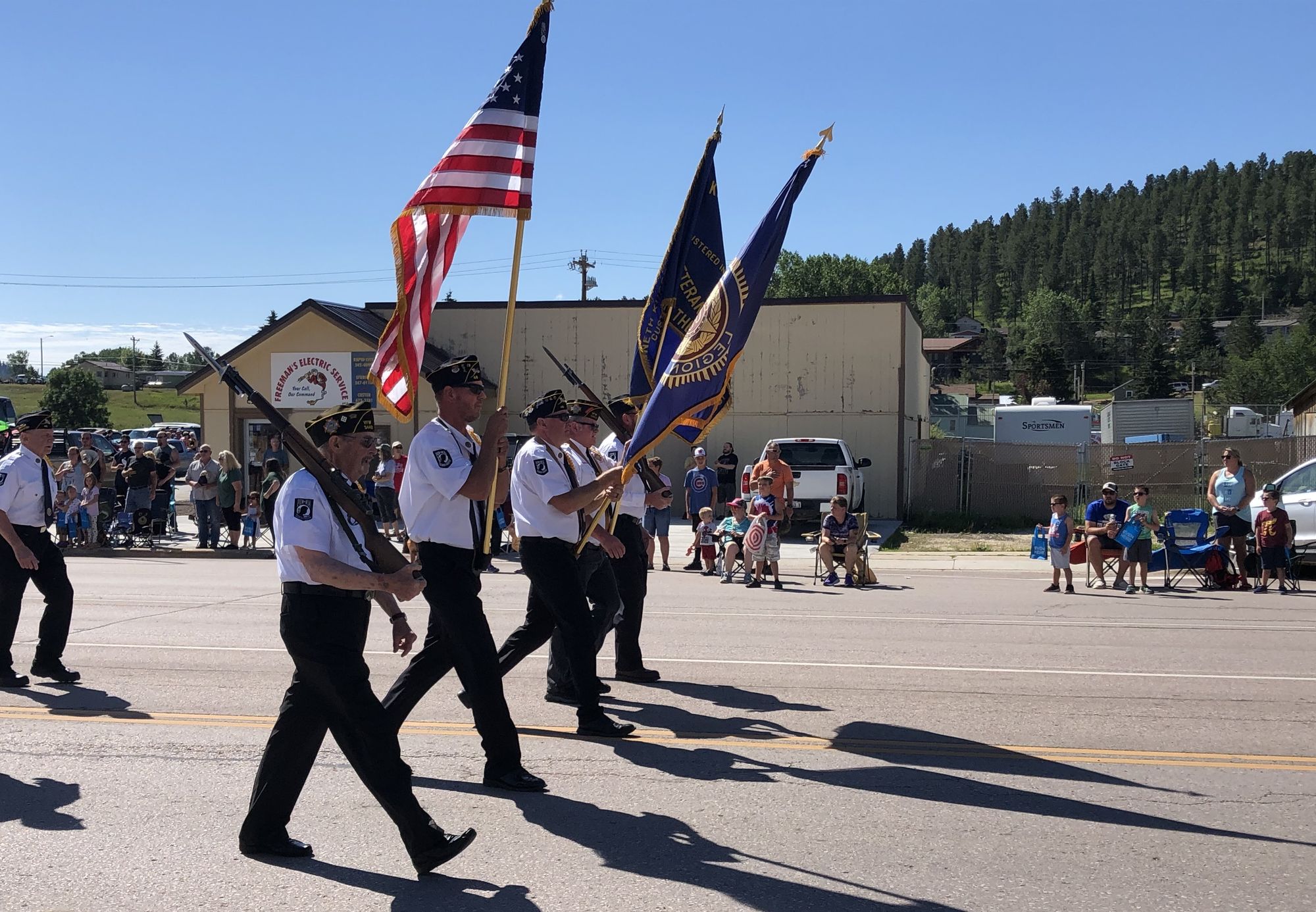
It takes 14 volunteers to pull off each ceremony, with color guard, firing squad, bugler, officer of the day and commander. One of the more notable recent events was the 75th anniversary of D-Day on June 6, 2019, at the 1881 Courthouse Museum in Custer.
Among the World War II veterans honored at that event was Harold Stickney of Custer, who served in 41 missions as an engineer gunner on a B-24 in the U.S. Air Force. Stickney was a member of American Legion Post 46 and served as mayor of Custer.
This year, Gonsor’s crew will perform a military salute on Veterans Day at Custer Veterans Park.
The honor guard suspended operations for a year during the pandemic and is still trying to meet the demand of military burials. The state Department of Health estimates that 3,281 people died from COVID-19 in South Dakota, with the elderly most at risk.
“Once we started back up, we were busy just about every weekend,” Gonsor said. “With the cremation process, a lot of (veterans) were sitting on the shelf waiting to be buried. We’re close to getting caught up.”
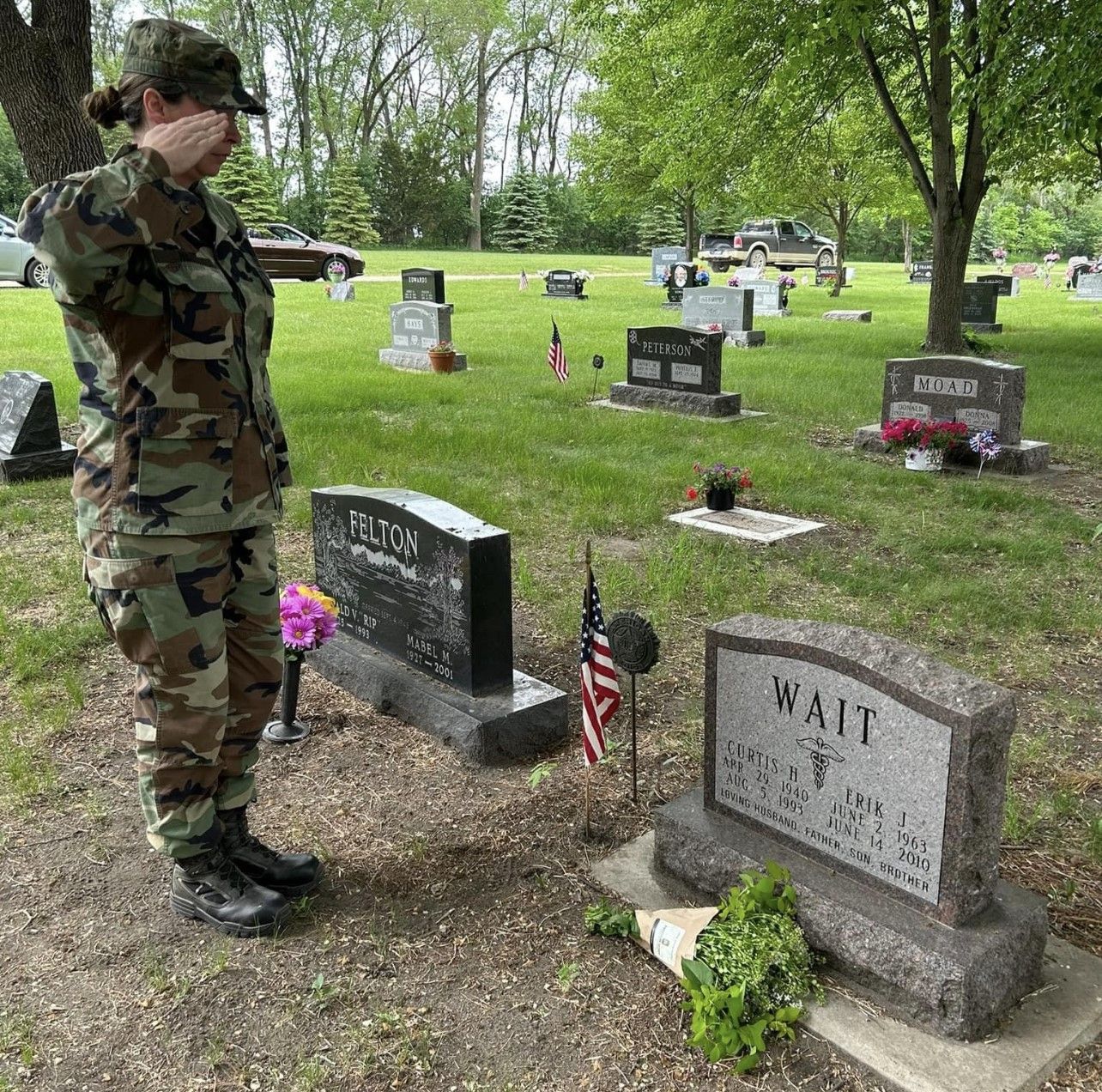
‘How can we help them?’
Connie Johnson served in the Army from 2002-05, spending 11 months in northern Iraq during the Second Gulf War. She received a Purple Heart for injuries suffered when her 101st Military Police Company convoy was struck by a roadside bomb.
She was able to return to duty but dealt with nerve damage and post-traumatic stress disorder after returning to South Dakota, with scars on her neck as a remnant of war.
Her South Dakota Veterans Council role keeps her active in advocating for former soldiers, with the recognition of changing times and shifting needs. In South Dakota, 12.4% of military veterans are female, according to Census data, compared to 7.7% in 2010.
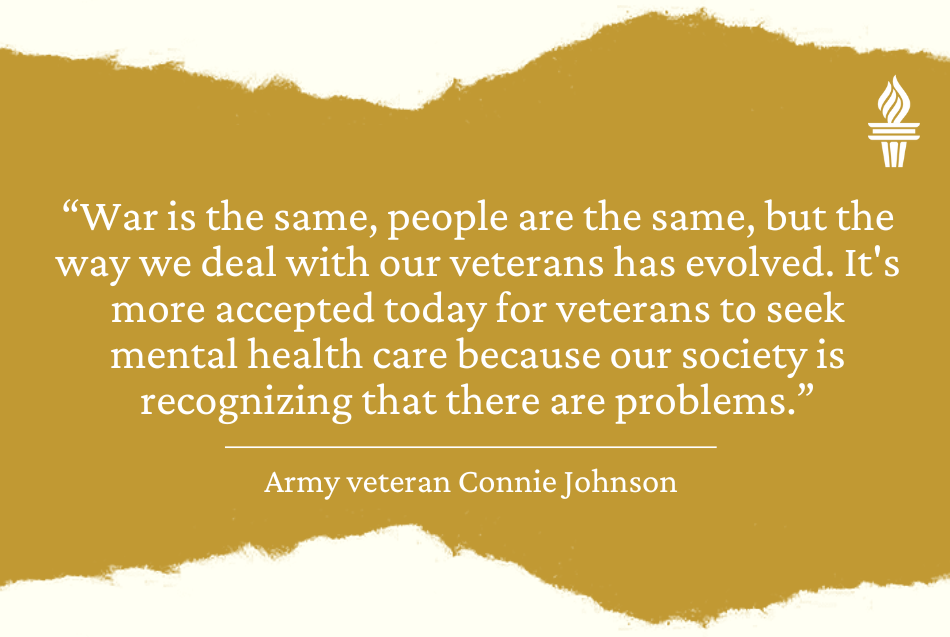
More than one-third of all veterans in the state are under the age of 55. A recent study by the Rand Corp. showed that post-9/11 veterans are more diverse and educated than their older cohorts but also more likely to meet the criteria for serious psychological distress.
“As society changes, veterans change,” said Johnson, noting the protests and resentment that many Vietnam veterans faced upon returning home. “War is the same, people are the same, but the way we deal with our veterans has evolved. It’s more accepted today for veterans to seek mental health care because our society is recognizing that there are problems. There’s more willingness to say, ‘How can we help them?’”
Suicide rate for vets higher than civilians
In 2020, the suicide rate for veterans was 57% higher than for non-veteran adults, according to the U.S. Department of Veterans Affairs. Earlier this year, the Sioux Falls VA Medical Center campus was expanded with a mental health outpatient clinic focused on substance abuse, vocational rehabilitation and suicide prevention services.
Some veterans still find solace and support in groups such as the American Legion and VFW, while others take a more personalized approach.
“I love the civic duty and being around that atmosphere,” said Johnson, a South Dakota State University alum who serves as the school’s coordinator of veteran affairs. “Other people do not. They don’t like talking about their experiences or being reminded of them. Or maybe they prefer to do it behind closed doors with a counselor. It’s about figuring out what works best.”
Gonsor was drafted into the Army in 1969 and served 14 months in Vietnam as a combat engineer and gunner. Part of his inspiration for the honor guard comes from his late father, a World War II veteran.
“I went to the VSO (Veterans Service Officer) to inquire about military rites and was told they would take care of it,” said Gonsor. “On the day of the funeral, we went to the cemetery and there was no military presence there. I vowed to myself that I would never let that happen again.”
Part of that means finding younger honor guard members, with Custer County a good place to recruit. It ranks first among South Dakota counties in percentage of adults who are military veterans (15.2%), followed by Fall River (14.1%), Meade (13.2%), Pennington (11.9%) and Day (11.7%).
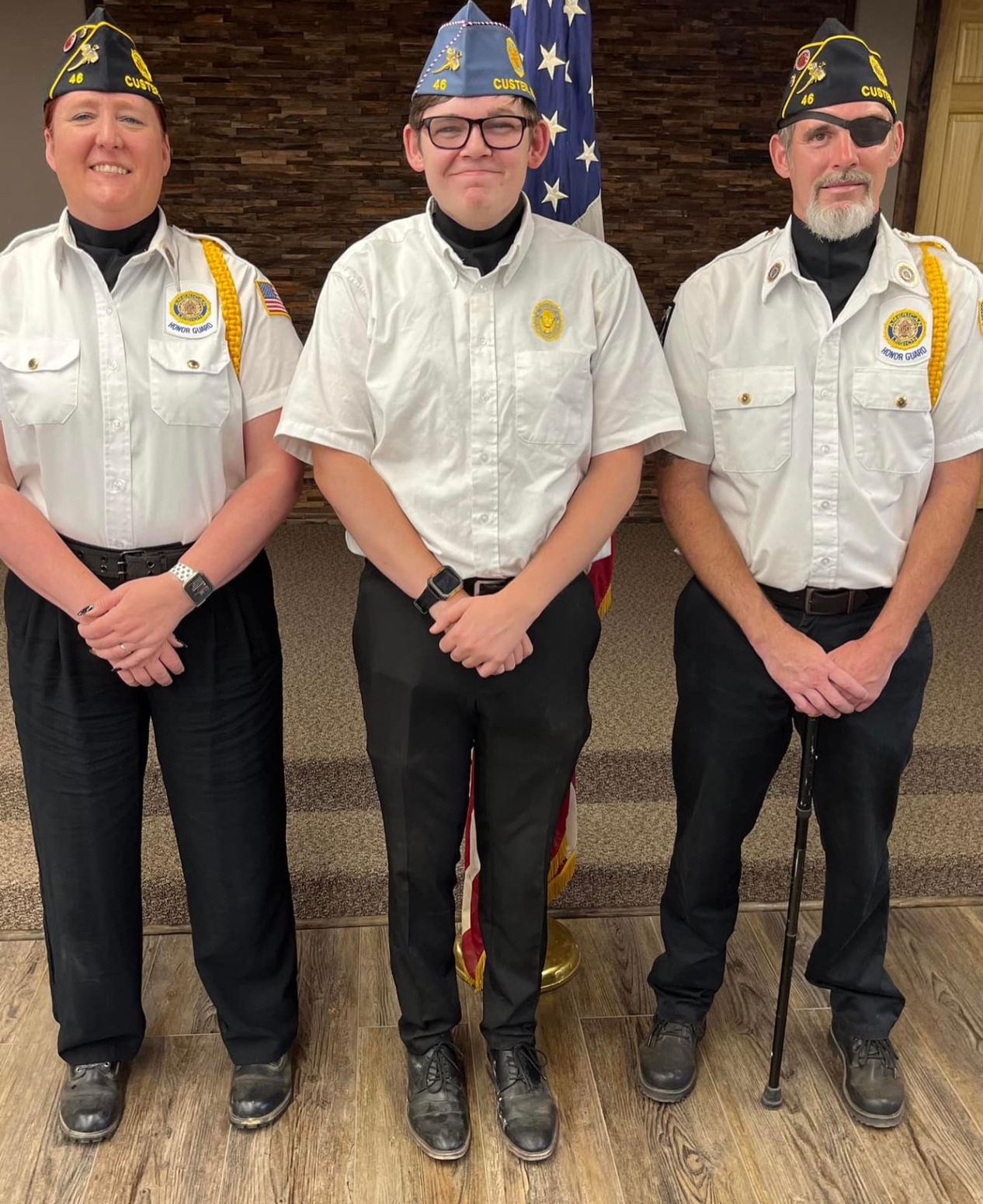
Honor guard finds new members
Helping with the youth movement is Richard Bierle and his wife, Kristen, who are members of American Legion Post 46. In August 2023, Kristen became the first female member of the honor guard by helping to provide military honors at the funeral of a Custer veteran.
Their son, Brandon, a senior at Custer High School, has served as a flag bearer in the color guard and will soon be trained as a member of the firing squad, bringing youthful energy to the corps at a time when it’s much needed.
That’s a source of satisfaction for Johnson, who doesn’t believe the dwindling number of veterans in South Dakota should impact the legacies of those who came before.
To help do that, she started the Freedom Acres initiative in which she puts on her uniform upon request and delivers flowers to the gravesites of veterans whose families want to memorialize their service.
“I feel like we need to continue to have these remembrances,” she said. “No matter where you go, there’s someone whose life has been affected by the service. Whether it’s at a funeral or Veterans Day or Memorial Day, these things are worth acknowledging.”
As for Gonsor, his future plans were made clear to his fellow honor guard veterans.
“I’m going to end up in the national cemetery up in Sturgis – that’s my next move,” he said. “I told the guys that it would be an honor for them to bury me.”
